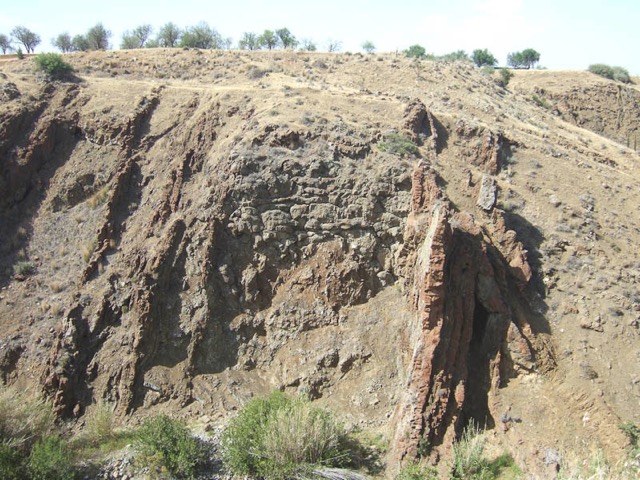31/7/2016

At the last meeting Dr. Chris Simpson presented a snapshot of the geology to be found on the island of Cyprus. The main focus of the talk was the Troodos Ophiolite. Ophiolite is a fragment of oceanic crust and the underlying upper mantle that has been uplifted and emplaced onto continental crust.
The Troodos ophiolite was created during the complex process of sea-floor spreading and formation of oceanic crust and was emerged and placed in its present position through complicated tectonic processes related to the collision of the Eurasian plate to the north and the African plate to the south.( Geological Survey department cyprus) It is seen as the most complete, intact and studied ophiolite in the world.
With many good photographs Dr Simpson worked his way up through the stratigraphic column of the ophiolite commencing with the ultramafic rocks like harzburgite composed of olivine and orthopyroxene. Harzburgite along with dunite are interpreted as a “mantle sequence”, which represents residue from partial melting of the upper mantle. The next sequence was the layered gabbro with massive gabbro above. The gabbro is a residual of magma. During the slow cooling, the heaviest minerals lie in the depths, thereby creating the darker coloured gabbro, with light-coloured varieties in the higher layers. At higher levels and in small pockets, the products of this different crystallisation are to be found, known as plagiogranites or granophyre.
Above this is a sheeted dyke complex. They are pathways through which molten basaltic magma rose from the mantle to the seafloor where it solidified as a pillow lava. Some of the magma did not reach to the surface and solidified as dykes, consisting of dolerite. Above these are the volcanic rocks consisting of pillow lavas and lava flows. Basalts predominate in the pillow lavas and are characterised by large spherical to ellipsoid pillows. Their crust is glassy due to the rapid cooling but the insides of the pillows is honeycombed due to sudden expansion of gases in the lava.
The geology along with the wonderful weather makes Cyprus a lovely and interesting place to visit.